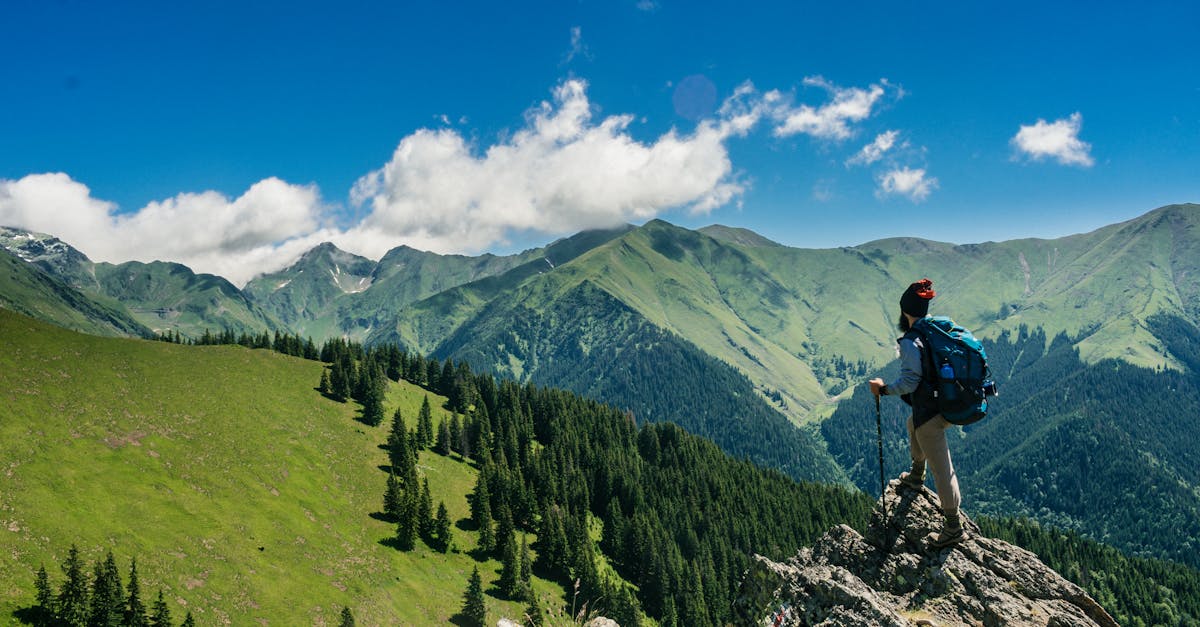Weather in Southern America

Explore the vibrant landscapes of Southern America through the lens of its diverse weather patterns. From the lush rainforests of the Amazon to the snowy peaks of the Andes, uncover how climate influences your travel experience in this captivating region.
Weather patterns in Southern America

The weather patterns in Southern America are diverse and influenced by various factors, making it an intriguing region to explore. From the tropical climates of the Amazon Rainforest to the arid landscapes of the Atacama Desert, this area experiences a wide range of weather phenomena.
el niño and la niña: impact on southern american weather
El Niño and La Niña are significant climate events that have a profound impact on Earth’s weather patterns, including those in Southern America. El Niño is characterized by warmer ocean temperatures in the Pacific Ocean, leading to altered atmospheric circulation and changes in precipitation patterns. La Niña, on the other hand, is associated with cooler ocean temperatures and typically results in opposite weather effects.
the effects of climate change on southern american weather
Climate change is altering weather patterns worldwide, including in Southern America. Rising temperatures, shifting precipitation patterns, and more frequent extreme weather events are becoming increasingly common in this region. These changes pose challenges for local communities and ecosystems, requiring adaptation strategies to mitigate the impacts.
extreme weather events in southern america: hurricanes and more
Southern America is no stranger to extreme weather events, with hurricanes being one of the most destructive natural disasters in the region. These powerful storms can cause widespread damage and devastation, impacting both coastal and inland areas. Understanding the drivers of such events is crucial for preparedness and response efforts.
forecasting weather patterns in southern america
Forecasting weather in Southern America is a complex task due to the region’s diverse climates and geographical features. Meteorologists use advanced technologies and models to predict changes in weather patterns, helping communities prepare for potential risks and uncertainties. Baker Perry, a renowned meteorologist, specializes in forecasting weather in extreme environments, providing invaluable insights into weather patterns at high elevations.
the future of weather patterns in southern america
As climate change continues to unfold, the future of weather patterns in Southern America remains uncertain. It is essential to monitor and understand the evolving trends in extreme weather events, such as El Niño and La Niña, to adapt and build resilience. Exploring the dynamic relationship between climate change and weather patterns is crucial for sustainable development and the well-being of the region.
Whether witnessing the beauty of the Amazon during the rainy season or marveling at the vastness of the Atacama Desert, Southern America offers a rich tapestry of weather patterns waiting to be explored.
Tropical climates and seasons

Caribbean Hurricane Season
The Caribbean region experiences its hurricane season from June to November, with the peak typically occurring in September. Travelers planning a trip to the Caribbean during this period should stay informed about weather updates and consider travel insurance that covers potential disruptions caused by hurricanes.
The Weather and Climate in Central America
Central America enjoys a tropical climate with two main seasons: the dry season from November to April and the rainy season from May to October. Travelers seeking sun-drenched beaches and lush rainforests should consider visiting countries like Costa Rica, Belize, and Panama during the dry season.
Miami’s Weather and Climate
Miami, located in the United States, boasts a tropical monsoon climate with hot and humid summers and warm winters. Travelers can enjoy the city’s vibrant culture, beautiful beaches, and exciting nightlife year-round due to its favorable weather conditions.
Madagascar’s Climate
Madagascar, an island nation off the southeastern coast of Africa, features a tropical climate with distinct wet and dry seasons. Travelers can explore Madagascar’s unique biodiversity, pristine beaches, and diverse landscapes while taking into account the seasonal variations in weather.
A Guide to Climate, Weather, and Seasonality in India
India’s diverse climatic conditions range from tropical in the south to temperate in the north, with distinct monsoon seasons affecting different regions. Travelers planning a trip to India should consider the local weather patterns to make the most of their visit and avoid weather-related disruptions.
Tropical Travel Destinations for Summer
For travelers seeking tropical escapes during the summer months, there are numerous destinations to choose from. From the sunny beaches of Bali to the vibrant rainforests of Costa Rica, these tropical paradises offer a perfect getaway for those looking to relax and unwind.
China Weather: Hotspots and Seasons
China’s vast territory encompasses various climatic zones, from tropical in the south to arid in the northwest. Travelers interested in exploring China should research specific regions and their corresponding weather patterns to plan their trip accordingly.
Hot Spots in April
April is a great time to visit destinations with warm weather and blooming landscapes. Travelers can consider hotspots like the Maldives, Seychelles, and Thailand for a tropical getaway during this pleasant month.
By understanding the tropical climates and seasons of different destinations, travelers can make informed decisions when planning their trips and ensure a memorable and enjoyable travel experience.
The impact of geographical features

Impacts of Tourism in Antarctica
Antarctica, with its pristine environment and unique wildlife, is experiencing the impacts of tourism. The delicate ecosystem is facing threats from increased human activity, leading to concerns about pollution, habitat destruction, and disturbance to wildlife. Invasive species introduced by tourists can disrupt the local flora and fauna, endangering the fragile balance of this remote region.
Ocean Currents and Climate
Understanding ocean currents is crucial for predicting and interpreting climate patterns worldwide. These currents play a significant role in regulating temperature, precipitation, and weather events. Travelers navigating the seas rely on knowledge of ocean currents to plan safe and efficient maritime routes.
Sailing to Save the Planet
Greta Thunberg’s high-profile sailboat journey to the UN Climate Summit drew attention to sustainable travel options and the impact of transportation on the environment. By choosing eco-friendly modes of travel, individuals can reduce their carbon footprint and contribute to environmental conservation efforts.
Altitude, Cold Weather, and Health
Geographical features such as altitude and cold weather can have a profound impact on human health. Conditions like high altitude sickness and cold-related illnesses require travelers to acclimate carefully and take necessary precautions. Understanding how geography influences health is essential for safe and enjoyable travel experiences.
Sports Tourism and Environmental Conservation
The rise of sports tourism presents both opportunities and challenges for preserving natural landscapes. Sporting events held in environmentally sensitive areas must balance the economic benefits of tourism with ecological conservation efforts. Sustainable practices and responsible tourism can help protect these valuable geographical features.
The Carbon Cycle and Climate Change
The carbon cycle is intricately linked to climate change and global geographical patterns. Human activities, such as travel and transportation, significantly impact carbon emissions and the earth’s climate. Awareness of the carbon cycle is essential for mitigating the effects of climate change and preserving natural geographical features.
Transcontinental Railroads and Economic Development
The construction of transcontinental railroads has shaped landscapes and connected regions, influencing geographical features and fostering economic development. These transportation networks open up new opportunities for trade, tourism, and cultural exchange, impacting geographical regions on a large scale.
Exploring Meteor Impact Craters
India boasts three significant meteor impact craters, showcasing the impact of geological events on landscapes. These craters offer insights into Earth’s history and geological processes, attracting travelers interested in geographical features shaped by cosmic events. Learning about these craters enhances our understanding of geography and planetary evolution.